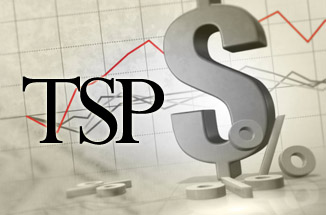
TSP board’s ExPRESS effort ‘raising the bar’ for participant services
The Federal Retirement Thrift Investment Board customer service effort ExPRESS will provide an "end-to-end view" of communications between the board and TSP...
The Federal Retirement Thrift Investment Board revealed details of its new consolidated customer service operation ExPRESS.
Robin Conner, the board’s deputy director in the Office of Participant Operations and Policy, shared highlights of the project during the board’s joint member/Employee Thrift Advisory Council (ETAC) meeting May 23. FRTIB administers the Thrift Savings Plan (TSP), which is like a 401(k) for federal employees.
Conner said ExPRESS will “raise the bar on the services we provide to our participants.”
“Right now we’re very reactive, paper-based, voice-centric and we’re segmented,” Conner said. “We want to get to the place where we are state of the art, omni-channeled, self service, anticipatory, automated and fully integrated in a way that allows us to transform our services.”
The way ExPRESS will do this, Conner said, is through:
- Modernizing technology
- Added communication channels
- More self-service options
- Upping TSP service delivery standards to match industry
Conner said among the plans for participant access is expanding call center hours to 24-hours per day, 6 days a week, as well as adding email and chat options.
The heart of ExPRESS is the Participant Engagement Hub (PEH), Conner said, which will put these new tools “into an interconnected set of technologies.”
For example, the PEH will combine case management, workflow reporting, content and learning management, as well as forms and paper correspondence, best practices and customer relationship management.
It’s “an end-to-end view of participant interactions with us, which will help us to serve them better,” Conner said.
FRTIB published a Request for Proposal (RFP) May 6, calling for “state-of-the-art technology and participant operations services to the Thrift Savings Plan.”
Comments are due June 3, Conner said, with a plan to post the final RFP in the fourth quarter of fiscal 2016. The phase-in period will be no less than nine months, Conner said, and the rest of the contract will be eight years —a 2-year base with two 3-year options.
Greg Long, FRTIB executive director, said the board had to be careful talking about cost during the procurement stage, but told those present that “we are talking about adding a meaningful amount of services, adding robustness of our service capabilities and we anticipate that will cost money.”
“It’s not a surprise to us that trying to become better costs money,” he added to chuckles.
During the board’s April meeting, members discussed cybersecurity, as well as its impact on the board’s budget.
Conner said the ExPRESS procurement has “very robust security requirements in it.”
FRTIB’s cybersecurity challenges and improvements carry more weight as the agency continues to see higher enrollment in the TSP than ever before, a trend it expects will continue as new military members are required to automatically enroll in the retirement plan by 2018.
Blended retirement
The two boards also received an update on the blended retirement project for military members. The changes take effect Jan. 1, 2018.
Under the retirement system that’s been in effect since the late 1940s, troops earn guaranteed pensions based on a mathematical multiplier that delivers 50 percent of their basic pay for the rest of their lives, assuming they retired at 20 years of service. (Service members who served fewer than 20 years received nothing).
The reforms Congress passed in December, following recommendations from the Military Compensation and Retirement Modernization Commission, reduced that 20-year retiree’s pension to 40 percent of their basic pay. To make up the difference, the government will make automatic 1 percent contributions to all members’ TSP accounts once they’ve served at least three years and match up to 4 percent of service members’ voluntary investments.
Tom Emswiler, director of participant operations and policy at FRTIB, said projected new auto-enrollments were expected to be more than 268,000 in 2018 and more than 276,000 in 2019 — based on Defense Department projected yearly recruiting numbers.
Those numbers don’t count the members currently serving 12 years or less, who can also voluntarily switch to the blended retirement plan starting 2018.
Emswiler said that among the steps to be taken to ensure project success, were a full review of systems and business units “to make sure they are able to handle the new volume.”
This includes the service bureau being prepared for an influx of returned mail, the legal processing units seeing an influx in requests for powers of attorney, and call centers getting more calls.
Once the systems-wide assessment is complete, Emswiler said, any shortfalls will need to be addressed. Contracts also need to be reviewed, such as the ones requiring a certain level of service at call centers, as well as updates to internal operations.
The project team is also working with Conner’s office — because blended retirement will be in place before ExPRESS — to ensure that the vendor chosen for the project understands the additional volume that will come from military retirement.
Survey says
Jim Courtney, FRTIB communications director, also shared results of his office’s My Account survey during the joint board meeting.
Courtney said about 1 million people per month visit their My Account option on TSP’s site, and so his office asked users to answer three questions regarding the My Account option:
- While logged into My Account, were you able to find what you were looking for?
- How can the TSP improve your online experience in the future?
- Where were you when you visited My Account?
About 96 percent of respondents said they were able to find what they were looking for, Courtney said. About 91 percent of the survey takers are civilians, while 70 percent of them are 55 or older. More than 60 percent of them are active participants.
Courtney said the open-ended question on improvements to TSP received about 8,000 responses.
The most frequent requests were:
- The option to reset passwords online.
- Better translation of graphics and charts between TSP’s public and private facing sites.
- The ability to check the status of a form online.
- The option to change contributions with TSP rather than with a payroll provider.
Copyright © 2025 Federal News Network. All rights reserved. This website is not intended for users located within the European Economic Area.





